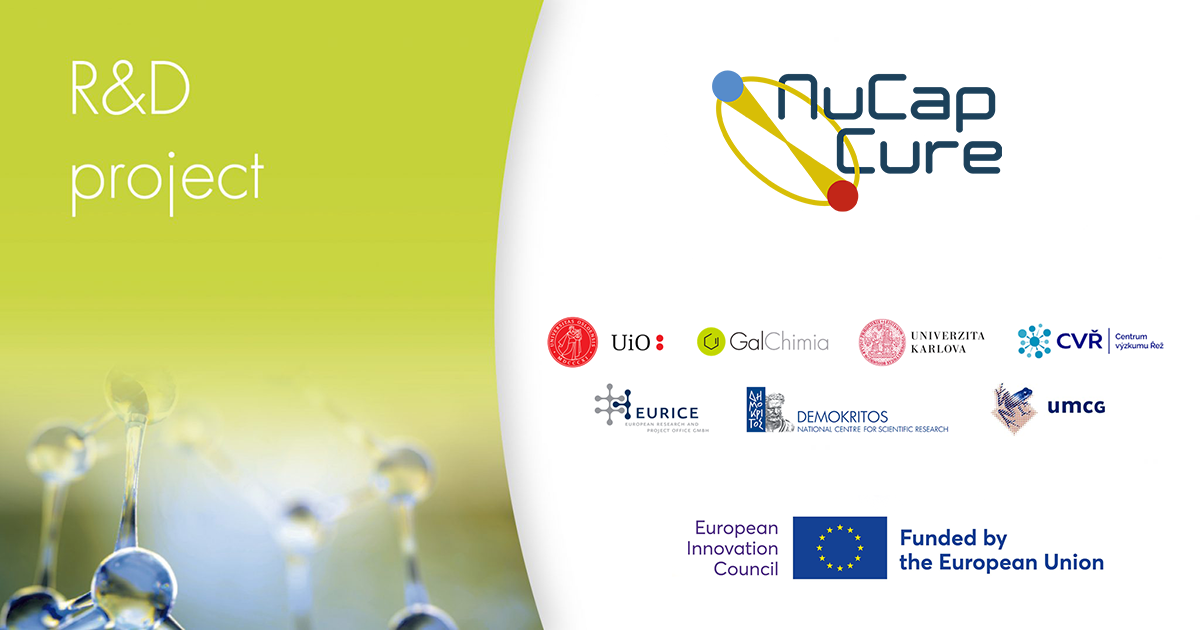Development of innovative proton and neutron therapies with high cancer specificity by ‘hijacking’ the intracellular chemistry of haem biosynthesis
The NuCapCure project gathers 7 partners from 6 countries: Universitetet i Oslo (Norway), GalChimia (Spain), Univerzita Karlova (Czechia), Centrum Vyzkumu Rez Sro (Czechia), Eurice – European Research and Project Office (Germany), National Center for Scientific Research “Demokritos” (Greece) and Academisch Ziekenhuis Groningen (Netherlands).
Abstract
Deep-lying cancers, such as glioblastoma multiforme (GBM) brain cancer, are very difficult to access and incurable by the current standards of care. The fluorescence of photosensitive molecules (PSs) can precisely guide surgical resection of GBM. Nevertheless, photomedical treatments like photodynamic therapy (PDT) show limited efficacies due to the low penetration of light into tissue. Proton radiotherapy can reach deep-lying disease through therapeutic energy deposition in a spatially confined region called Bragg peak. Current neutron-based therapies, like Boron Neutron Capture Therapy (BNCT), have sufficient penetration depth but lack cancer specificity.
In NuCapCure, we propose to ‘hijack’ intracellular biosynthetic pathways and use them to produce custom-made drugs that will facilitate two genuinely new cancer treatments:
- “NuCapCure Proton”, combining proton radiotherapy, protondynamic therapy through PS proton activation, and proton capture therapy (BPCT) through three produced alpha particles
- “NuCapCure neutron”, combining GBM specific BNCT and PS neutron activation as demonstrated in the FET-open project FRINGE.
The main scientific breakthroughs of NuCapCure will be to demonstrate the custom production of novel compounds through native intracellular biosynthesis but also to establish experimental proof-of-principle, both in vitro and in vivo, of the proposed two novel therapies. Our highly interdisciplinary project team comprises world-renowned experts from a unique combination of disciplines: proton and neutron physics, synthetic chemistry, photochemistry, photobiology, radiobiology, medical physics, nuclear reactor and particle accelerator technology, and radiooncology to lay the foundations for novel, targeted and curative therapies against currently fatal cancer indications like GBM.
Click here to visit the project website
This project has received funding from the European Union’s Horizon Europe – European Innovation Council (EIC) Pathfinder programme under Grant Agreement number 101130209.



